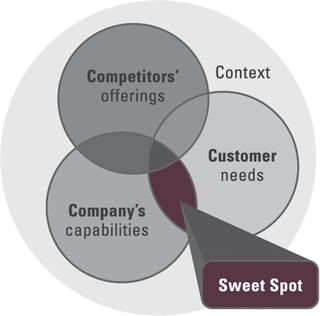
Photonics West brings together more than 20,000 optics and photonics leaders from all over the world. SPIE’s industry track of courses is gaining momentum, and this year our team had the honor to teach “The New Sales Model.” There were some exceptional discussions among myself, Launch Team VP of Account Services Sarah Campagna, and sales and marketing professionals the industry. Couldn’t make the session? These attendee questions might provide some insight.
Q: What are the primary methods of communication preferred today? How do you convert inbound marketing to human contact?
A: Automated chat, email blasts, and social media posts are all useful channels for initial contact and inbound lead generation. More meaningful conversations require a phone call, personal emails, and a direct ask to connect on social networks such as LinkedIn.
As inbound in inherently global, an inbound marketing strategy may broaden your typical customer geographic base. Face-to-face, human interaction is still important, so you may need to beef up your video conferencing skills. Global sales growth also shifts the intent of your trade show calendar, so make sure that 1:1 prospect and customer meetings is a priority for any planned travel.
Q: What CRM / ERP are you seeing work best?
A: This depends on your company size and the sophistication of your sales process. For smaller companies or those just getting started with a consistent sales process, we like the HubSpot CRM. It’s free, sets up in minutes, and is easily customizable. We actually started on SalesForce but found it to be more than we needed. We wanted a starting point based on best practice sales processes, and HubSpot was a great fit.
As for ERP, most of the companies we work with use EPICORE. This isn’t our area of expertise. We do see companies who want to use their ERP’s CRM module but a couple years later have made no process. It’s important to think through where exactly the handoff from CRM to ERP happens, and how to ensure that contacts are synced.
No tool is perfect—consistency in usage is the largest success factor.
Q: How do you get customers when one large competitor already owns most of the market?
 A: Go where they can’t. Figure out your sweet spot—your core capabilities, what your customers value, and what your competitor can’t touch. Market positioning or product positioning is the process of identifying your unique value proposition, within a specific market, to a specific type of customer. It’s your “because.”
A: Go where they can’t. Figure out your sweet spot—your core capabilities, what your customers value, and what your competitor can’t touch. Market positioning or product positioning is the process of identifying your unique value proposition, within a specific market, to a specific type of customer. It’s your “because.”
As a small company entering the market, you can move faster, deliver more personal service, and be cooler, funnier, or more edgy. Social media is a great equalizer. Use case studies to prove your viability in serving large companies.
Q: What works beyond the website?
A: With creative content distribution, a prospect doesn’t necessarily have to visit your website to find your content:
- Promote blog posts and downloads on your social media profiles.
- Create a video for YouTube (now the 2nd most-used search engine among engineers), and also embed it on a web page.
- Publish your latest technical presentation on SlideShare.
- Submit original articles to trade publications.
Q: Any warnings for participating in social media?
A: There sure are:
- Don’t just talk about yourself. If you did it at a cocktail party, sooner or later, people would stop listening. Add curated content to the mix to build thought leadership.
- Monitor for comments or mentions and respond very quickly.
- Frequency matters. Strive for daily.
- Stay on message. We like to pick three themes.
- Tag others in order to expand reach.
- Establish a straightforward policy for employee participation, and add it to your handbook.
Q: If I can only spend money on one marketing project next year, what should it be?
A: Content. Focus on developing quality educational pieces—editorial articles, white papers, blog posts, etc.—that are targeted to serve your customers’ interests and needs. Leverage it across channels, from trade publications to YouTube and social media.
Q: Do you have any sample reports of how marketing activities are measured?
A: We like using HubSpot’s traffic calculator to set goals for inbound marketing efforts and Google Analytics to measure progress. We also created our own KPI Worksheet to help those just getting started with marketing metrics.
We regularly look at year-to-date comparisons of:
- Traffic
- Quality of traffic
- Total leads
- Click-through rate
- Conversion rate
- Marketing qualified leads and Sales qualified leads
- Close win rate
Q: What’s your favorite prospecting tool for independent sales reps?
A: LinkedIn, of course. If you know your targeted industries, job titles, geographies, etc., this can be really powerful tool.
Q: Do more trade shows mean more leads?
A: Only if they’re paired with the right activities, like:
- Selecting trade shows with the right audience. Always walk it first.
- Pre-show emails.
- Lead follow-up, including nurture campaigns using marketing automation.
- Measuring results, like leads year-over-year and total ROI.
- Compare lead gen to your fellow exhibitors (check out our 2016 Photonics West survey for benchmark data – 2017 coming soon).
Q: Does sending engineers to market products work?
A: Not if their personalities are not suited to relationship development and management. Successful selling today demands:
- Systematic behavior—following the process, using the CRM, doing the work consistently.
- Asking great questions, exploring for fit.
- Willingness to say no.
That said, I’d choose a credible expert in optics who can do these things over someone with a “golden rolodex” who isn’t committed to exploring, following up, or bringing the customer value with real expertise.
Check back for part 2, or download the presentation slides.


